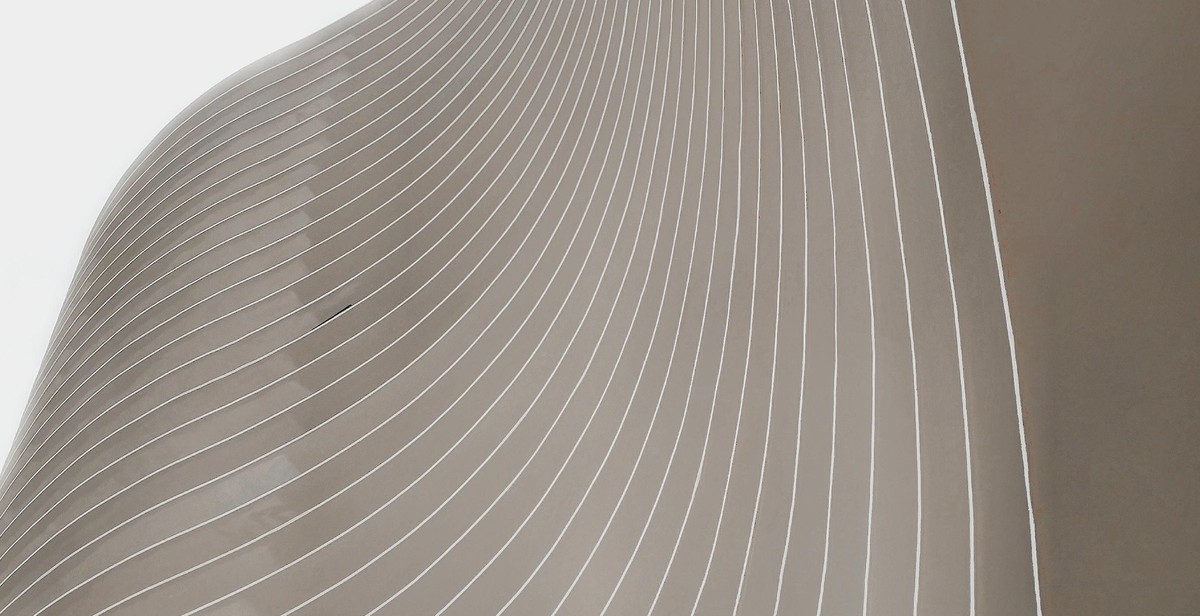How to Design a Healing Architecture: Creating Calming and Restorative Spaces
Designing a healing architecture is about creating spaces that promote physical, emotional, and psychological well-being. With the right design elements, a space can provide a calming and restorative environment that supports healing and recovery.
Healing architecture is not limited to healthcare facilities. It can be applied to various types of spaces, including homes, workplaces, and public spaces. The key is to incorporate design elements that promote relaxation, reduce stress, and enhance the overall quality of life.
The Benefits of Healing Architecture
Healing architecture has numerous benefits, including:
- Reduced stress and anxiety
- Improved mood and emotional well-being
- Enhanced physical healing and recovery
- Increased productivity and creativity
- Improved overall quality of life
By incorporating healing architecture into your space, you can create an environment that promotes health and well-being for everyone who uses it.
Design Elements of Healing Architecture
There are several design elements that are commonly used in healing architecture:
- Natural light and ventilation
- Pleasant views of nature
- Soft colors and textures
- Quiet spaces for reflection and meditation
- Access to outdoor spaces
- Comfortable and ergonomic furniture
- Art and other forms of visual stimulation
By incorporating these design elements into your space, you can create a calming and restorative environment that promotes healing and well-being.

Understanding Healing Architecture
Healing architecture refers to the design and planning of physical spaces that promote health and well-being. It is an approach that recognizes the impact of the built environment on the human experience and seeks to create spaces that support physical, emotional, and mental healing.
What is Healing Architecture?
Healing architecture is a holistic approach to design that considers the needs of the whole person, including their physical, emotional, and spiritual well-being. It involves creating spaces that are calming, restorative, and supportive of healing processes. Healing architecture can be applied to a wide range of spaces, from hospitals and clinics to residential homes and public spaces.
Healing architecture takes into account factors such as natural light, air quality, acoustics, and the use of color and materials. It also considers the layout and flow of spaces, with an emphasis on creating environments that promote relaxation and reduce stress.
The Importance of Healing Architecture
The importance of healing architecture lies in its ability to support the healing process and improve the overall well-being of individuals. Research has shown that well-designed healing spaces can reduce stress, anxiety, and pain, while improving patient outcomes and overall satisfaction with care.
Healing architecture can also have a positive impact on healthcare providers, improving their job satisfaction and reducing burnout. In addition, healing architecture can benefit the wider community by creating public spaces that promote social interaction, physical activity, and mental well-being.
Overall, healing architecture is an approach that recognizes the importance of the built environment in promoting health and well-being. By creating spaces that support healing processes and improve the overall quality of life, healing architecture has the potential to transform the way we design and experience our physical surroundings.

Designing Healing Spaces
Designing healing spaces is a critical aspect of creating calming and restorative buildings. Architects and designers must consider various factors, including color and lighting, nature and biophilia, and accessibility and universal design.
Color and Lighting
Color and lighting are essential components of healing spaces. They have a significant impact on people’s emotions and can influence their mood. For example, warm colors such as yellow, orange, and red can create a sense of comfort and coziness. On the other hand, cool colors like blue and green can promote relaxation and calmness.
Lighting is equally important, and architects must consider the type of lighting used in healing spaces. Natural light is the best option as it provides a connection to the outside world and promotes a sense of wellbeing. However, artificial lighting can be used to supplement natural light, and it should be carefully chosen to avoid glare and harsh shadows.
Nature and Biophilia
Nature and biophilia play a crucial role in healing spaces. Biophilic design incorporates natural elements such as plants, water, and natural materials into the built environment. It has been shown to reduce stress levels, improve cognitive function, and promote healing.
Architects and designers should incorporate biophilic elements into the design of healing spaces. For example, they can include indoor plants, create green walls, or incorporate water features. Natural materials such as wood and stone can also be used to create a sense of warmth and connection to nature.
Accessibility and Universal Design
Accessibility and universal design are critical considerations in healing spaces. Buildings must be designed to accommodate people of all abilities, including those with disabilities. This includes providing ramps, wide doorways, and accessible bathrooms.
Universal design principles should also be incorporated into the design of healing spaces. This means creating spaces that are flexible and adaptable to meet the changing needs of users. For example, furniture should be easy to move and rearrange, and spaces should be designed to accommodate different activities.
| Key Takeaways: |
|---|
| – Color and lighting have a significant impact on people’s emotions and mood. |
| – Biophilic design elements can reduce stress levels, improve cognitive function, and promote healing. |
| – Accessibility and universal design principles should be incorporated into the design of healing spaces. |

The Impact of Materials and Textures on Well-being
The materials and textures used in a healing architecture can play a significant role in promoting well-being. They can affect the mood, emotions, and physical sensations of the occupants of a space. Therefore, it is crucial to carefully consider the selection of materials and textures for a calming and restorative environment.
Materials
The use of natural materials in a healing architecture can create a connection with nature, promoting a sense of calm and relaxation. For instance, wood, stone, and bamboo are all excellent choices for flooring, walls, and furniture. They provide a warm and inviting atmosphere, reducing stress and anxiety levels.
Moreover, the use of non-toxic and eco-friendly materials can contribute to a healthier indoor environment. For example, using low VOC (volatile organic compounds) paint, formaldehyde-free insulation, and sustainable materials can reduce air pollution and enhance the quality of the air.
Textures
The choice of textures can also influence the well-being of the occupants of a space. Smooth and soft textures can create a sense of comfort and relaxation, while rough and tactile textures can provide a sense of grounding and stability. Therefore, it is essential to balance the textures used in a healing architecture to create a harmonious and calming environment.
Additionally, the use of natural textures such as wood grain, stone patterns, and plant fibers can contribute to a sense of connection with nature. This can further enhance the well-being of the occupants of a space.
Conclusion
The selection of materials and textures in a healing architecture can have a profound impact on the well-being of its occupants. Therefore, it is important to carefully consider the use of natural, non-toxic, and eco-friendly materials, as well as the balance of textures, to create a calming and restorative environment.

Incorporating Mindfulness and Meditation
Mindfulness and meditation have become increasingly popular practices in recent years, and for good reason. Both practices have been shown to have a range of benefits for mental and physical health, including reducing stress, improving sleep, and increasing overall well-being. When designing healing architecture, it’s important to incorporate spaces that promote mindfulness and meditation.
The Benefits of Mindfulness and Meditation
Mindfulness is the practice of being fully present and engaged in the moment, without judgment. Meditation is a practice that involves training the mind to focus and be present. Both practices have been shown to have a range of benefits, including:
- Reducing stress and anxiety
- Improving sleep
- Boosting the immune system
- Increasing feelings of well-being and happiness
- Improving cognitive function
- Lowering blood pressure
Designing Spaces for Mindfulness and Meditation
When designing spaces for mindfulness and meditation, it’s important to create an environment that is calm and peaceful. This can be achieved through the use of natural materials, such as wood and stone, and through the use of calming colors, such as blues and greens. It’s also important to incorporate natural light and views of nature, as these have been shown to have a calming effect on the mind and body.
Spaces for mindfulness and meditation should also be free from distractions, such as noise and clutter. This can be achieved through the use of soundproofing materials and through careful attention to the layout and design of the space. It’s also important to incorporate comfortable seating and cushions, as well as any necessary equipment, such as yoga mats or meditation cushions.
Overall, incorporating mindfulness and meditation into healing architecture can have a significant impact on the well-being of those who use the space. By creating calm and peaceful environments that promote mindfulness and meditation, we can help to reduce stress, improve sleep, and increase overall well-being.

Conclusion
Healing architecture is an essential aspect of creating calming and restorative spaces. The design of such spaces requires careful consideration of various factors, from the physical environment to the psychological well-being of the occupants.
Through the use of natural elements, such as light, water, and air, healing architecture can create an environment that promotes relaxation and rejuvenation. The incorporation of biophilic design principles can also help to reduce stress levels and enhance overall well-being.
It is important to note that healing architecture is not limited to healthcare facilities and can be applied to various settings, including homes, workplaces, and public spaces. By creating calming and restorative spaces, we can improve the quality of life for individuals and communities.
Effective healing architecture requires collaboration between architects, designers, healthcare professionals, and other stakeholders. By working together, we can create spaces that not only look beautiful but also promote healing and well-being.
- Designing a healing architecture requires careful consideration of various factors, including the physical environment and psychological well-being of occupants.
- Natural elements and biophilic design principles can help to create a calming and restorative environment.
- Healing architecture can be applied to various settings, including homes, workplaces, and public spaces.
- Collaboration between architects, designers, healthcare professionals, and other stakeholders is essential for effective healing architecture.
Overall, healing architecture is an important aspect of creating spaces that promote well-being and improve the quality of life for individuals and communities.
